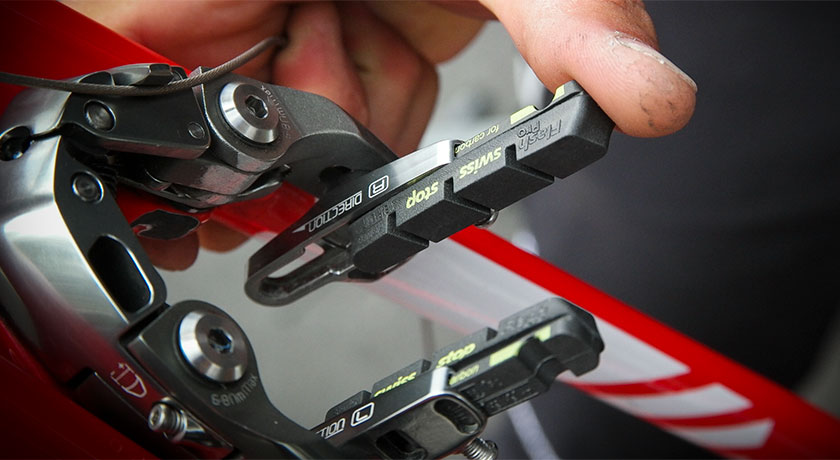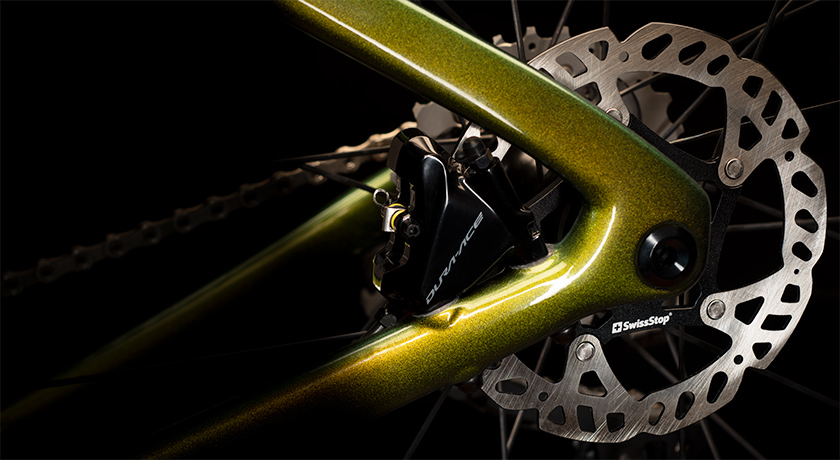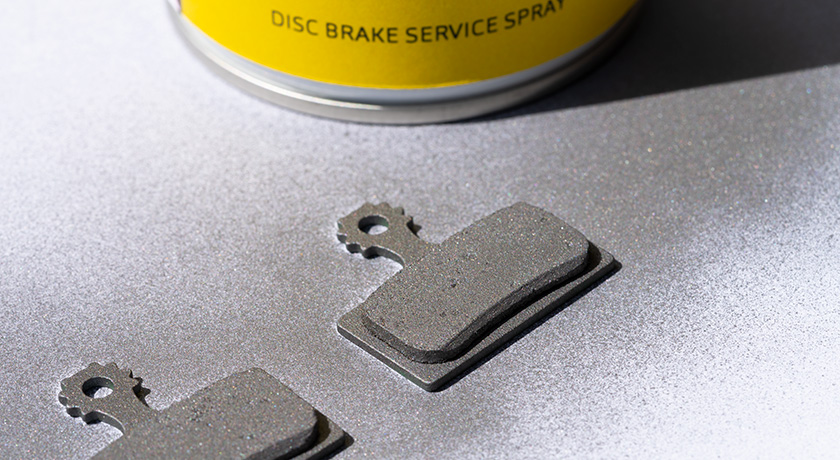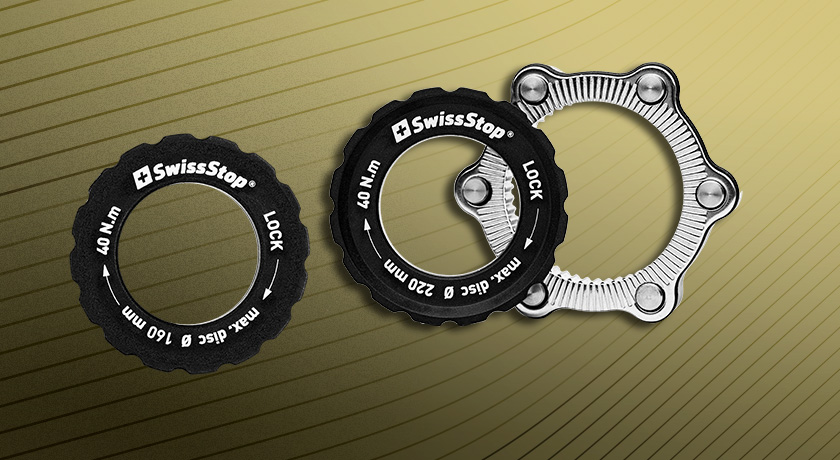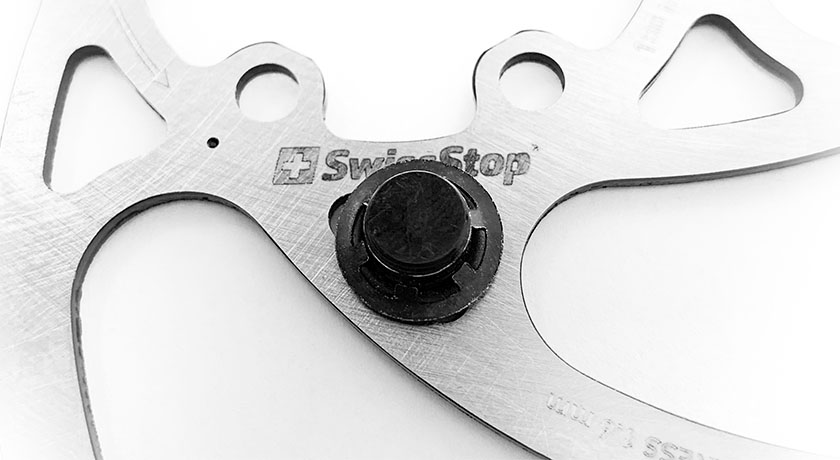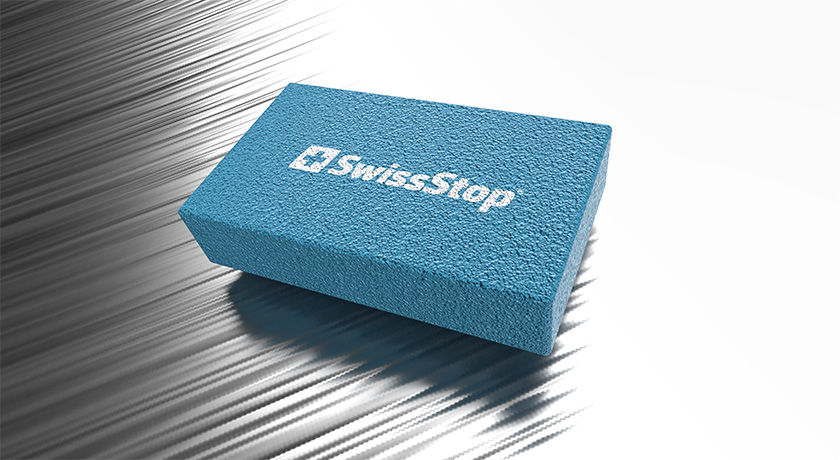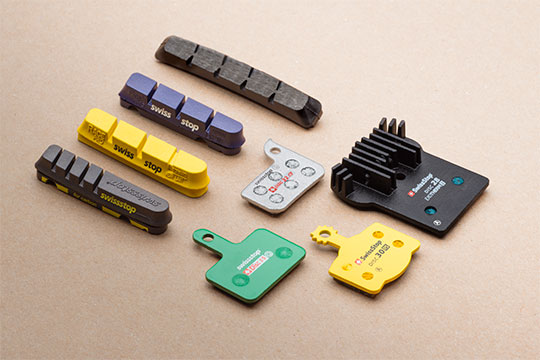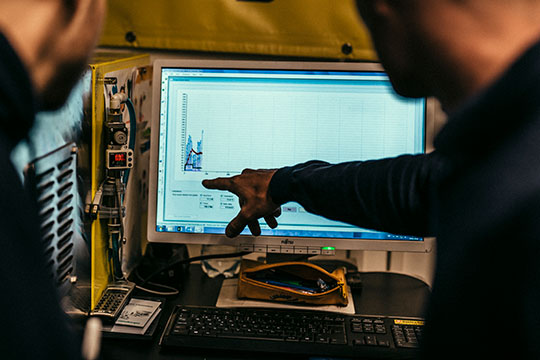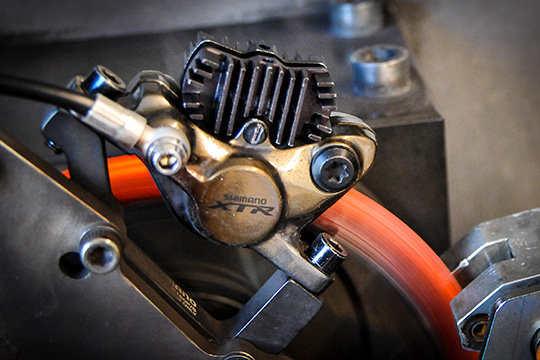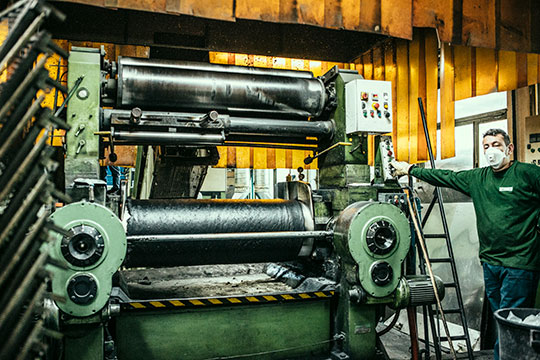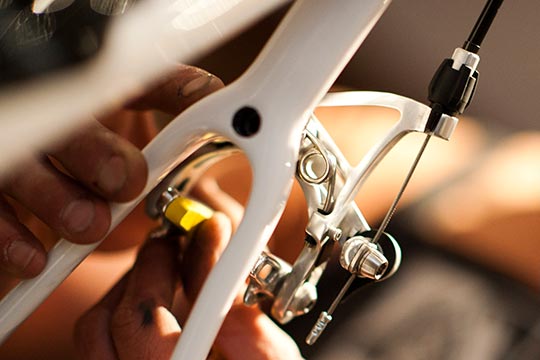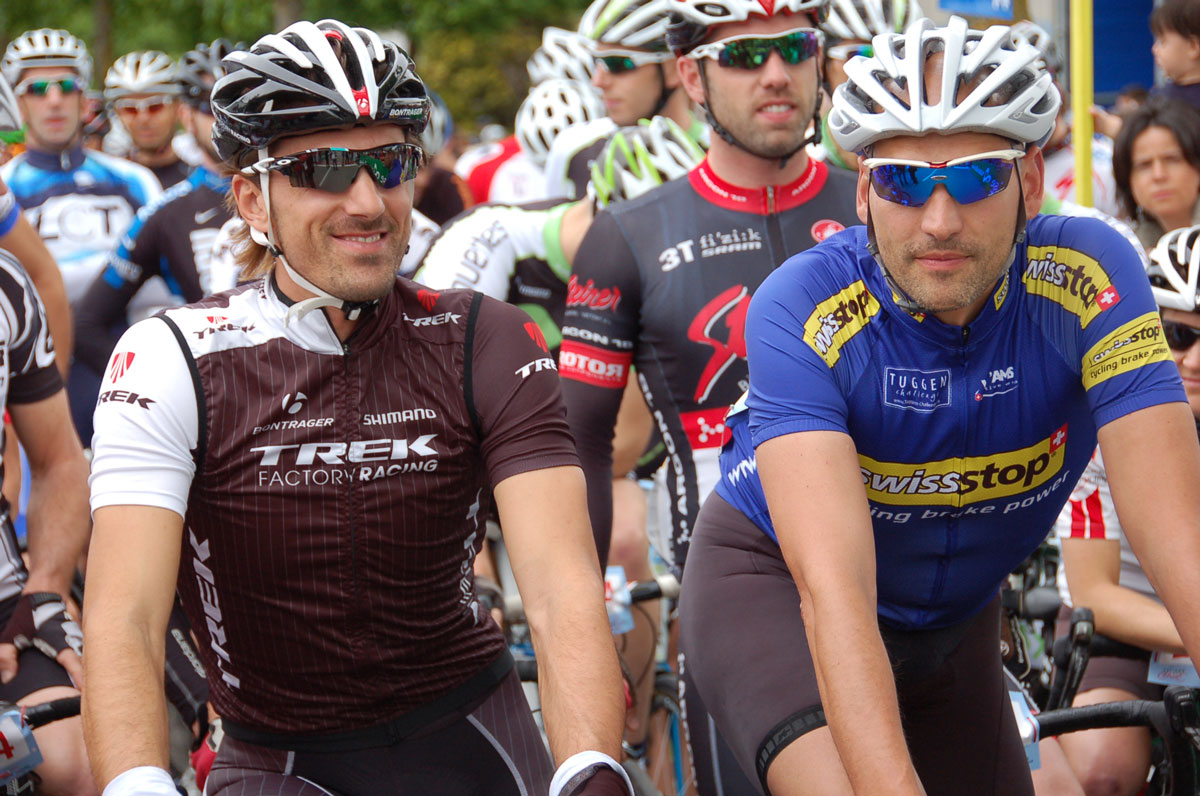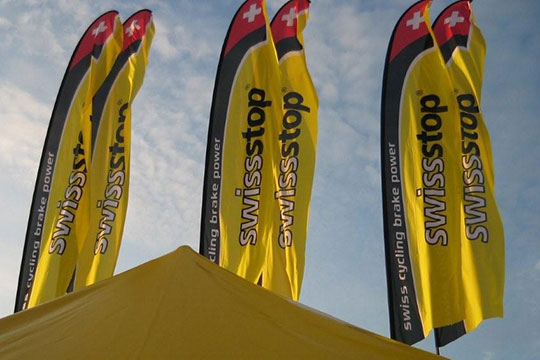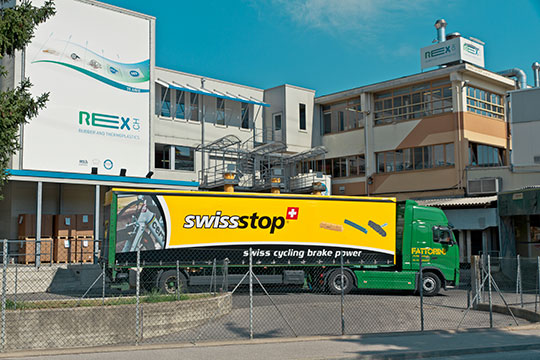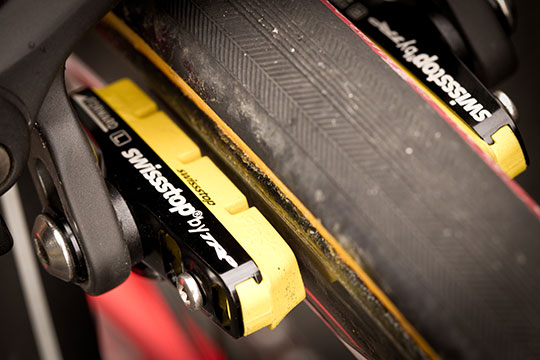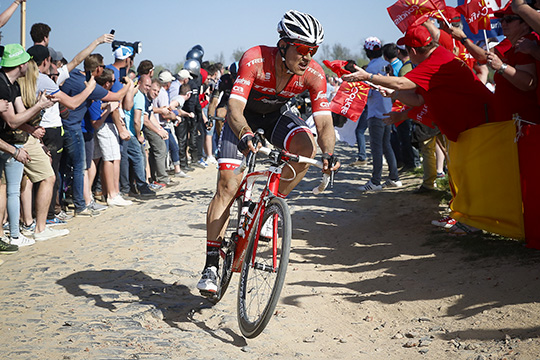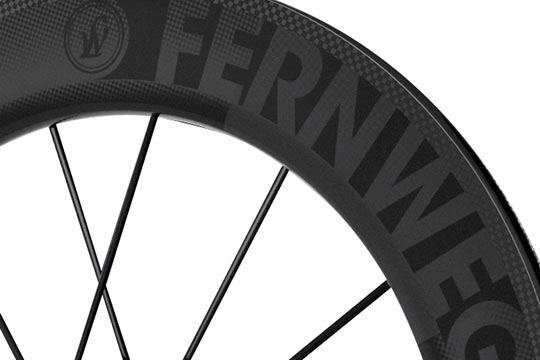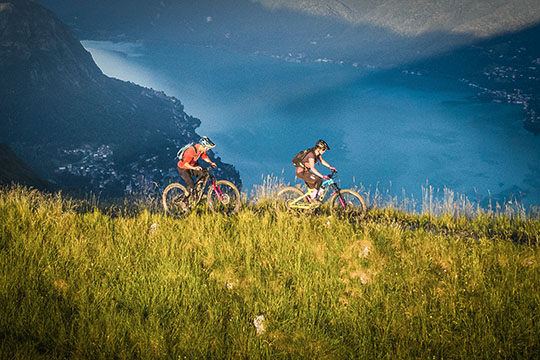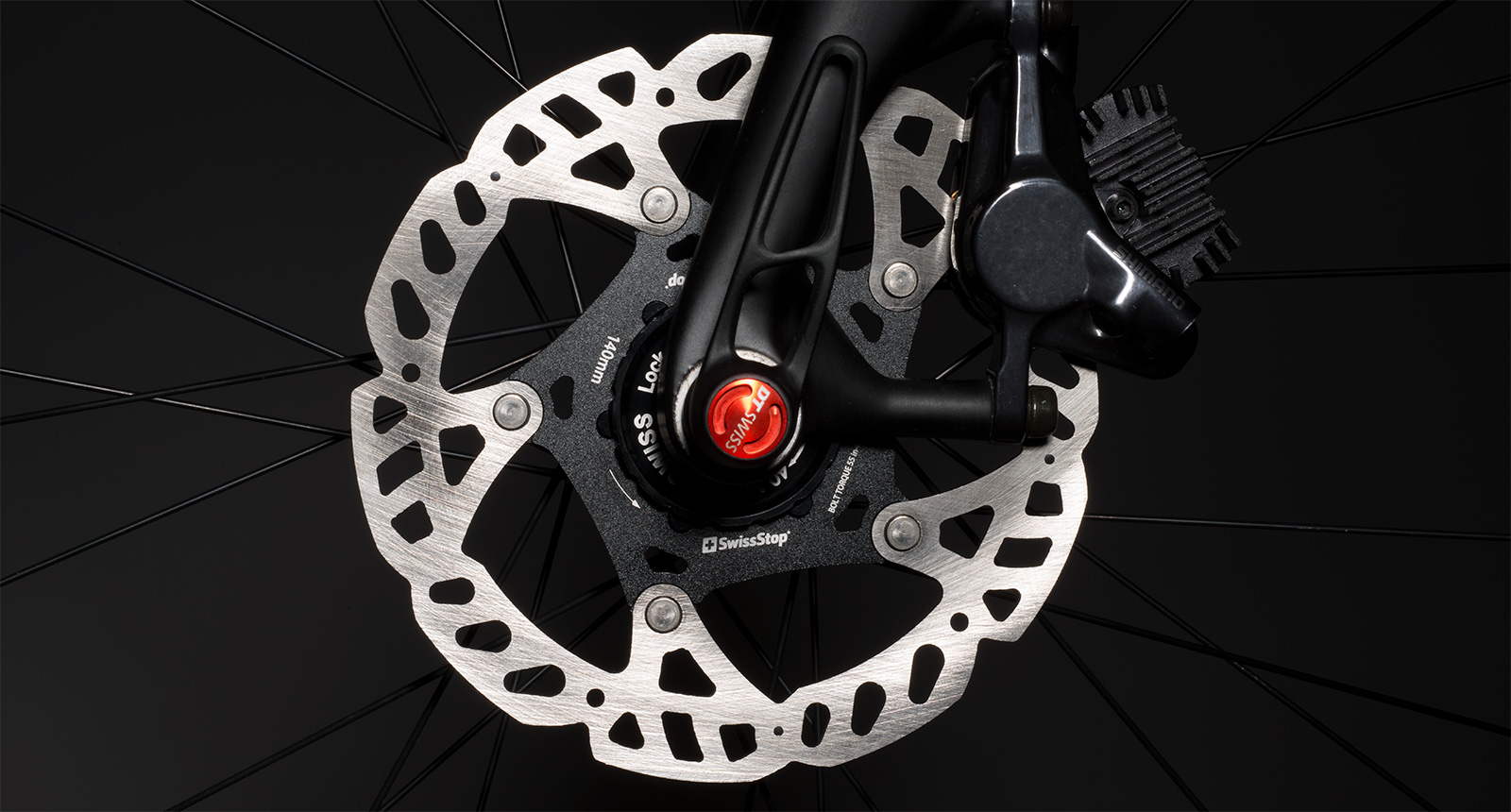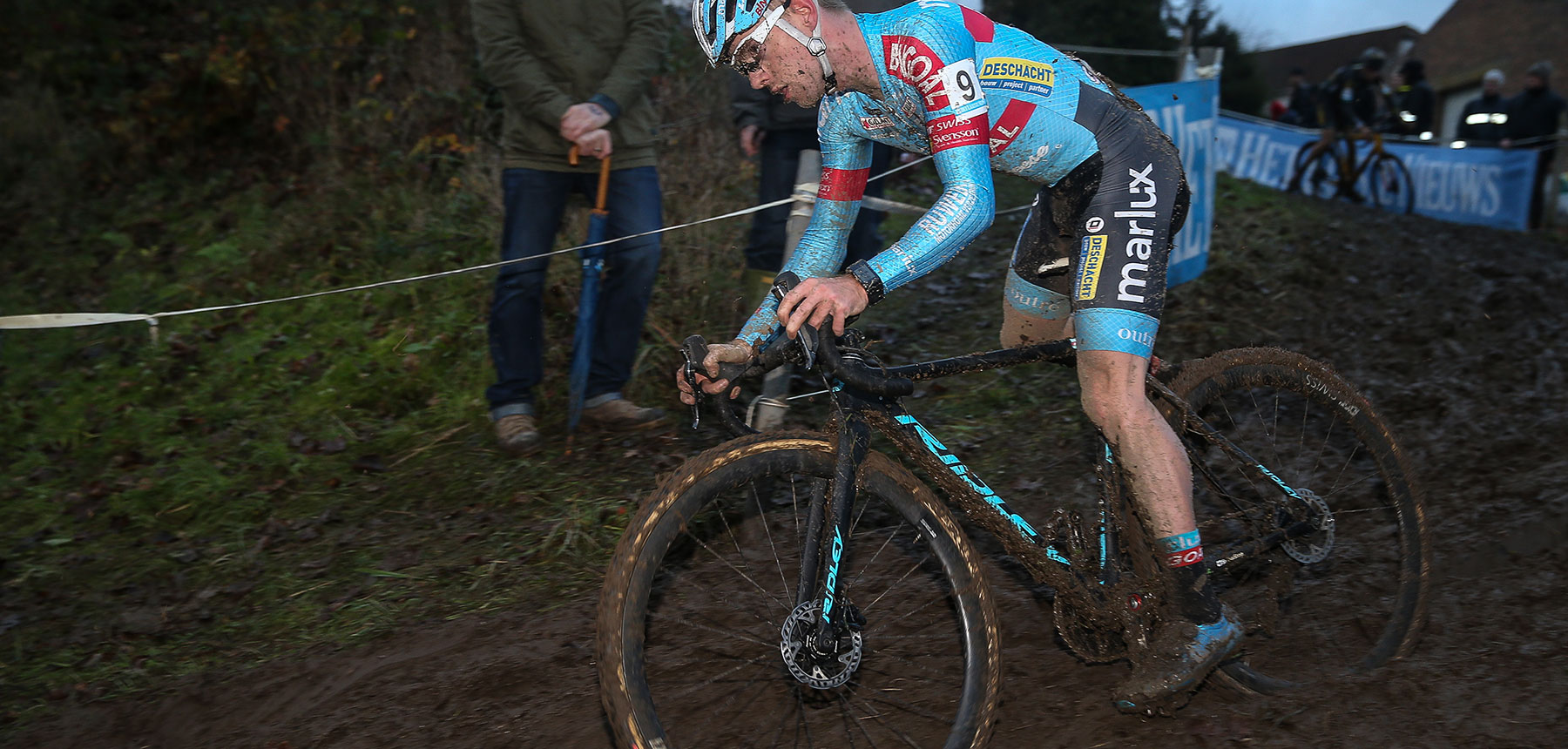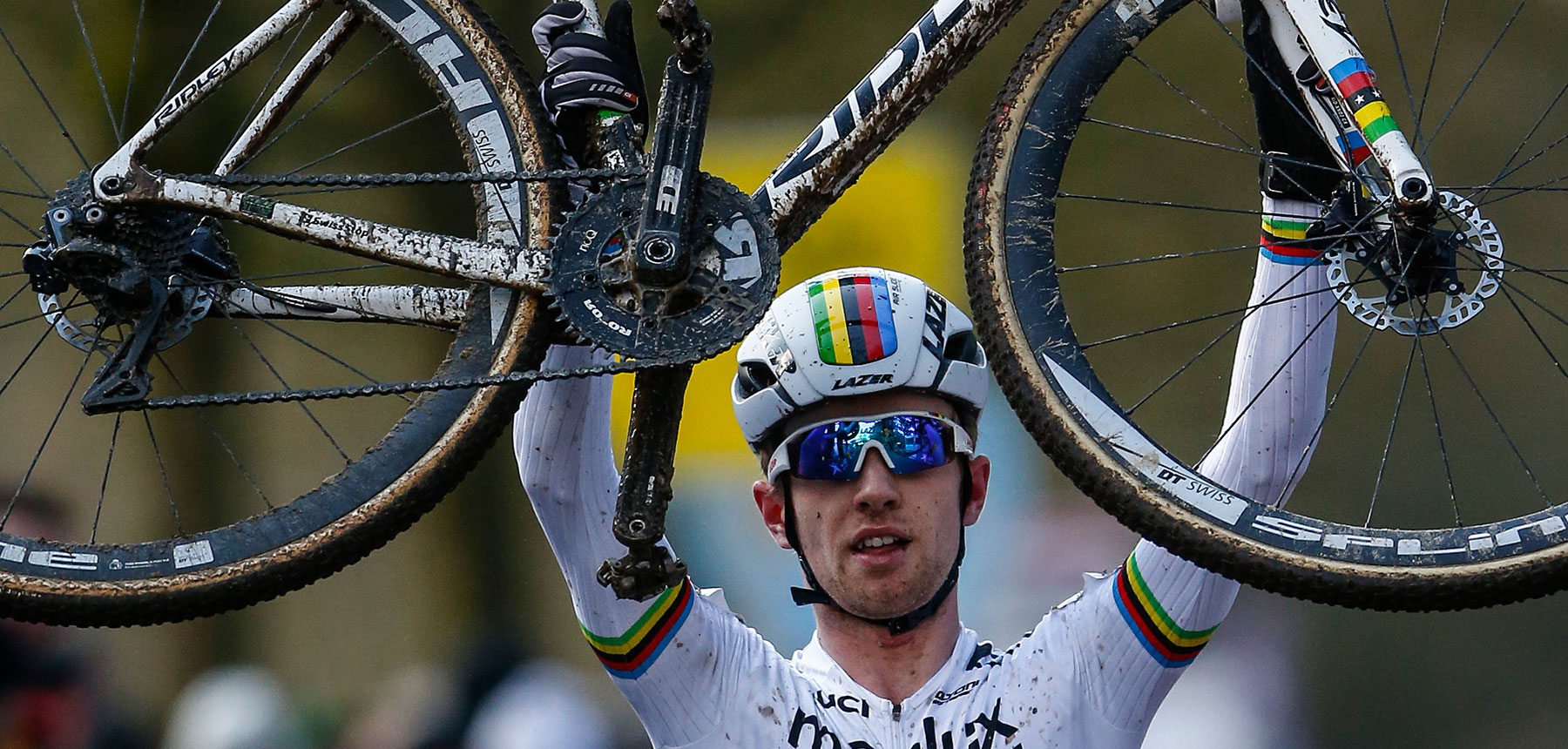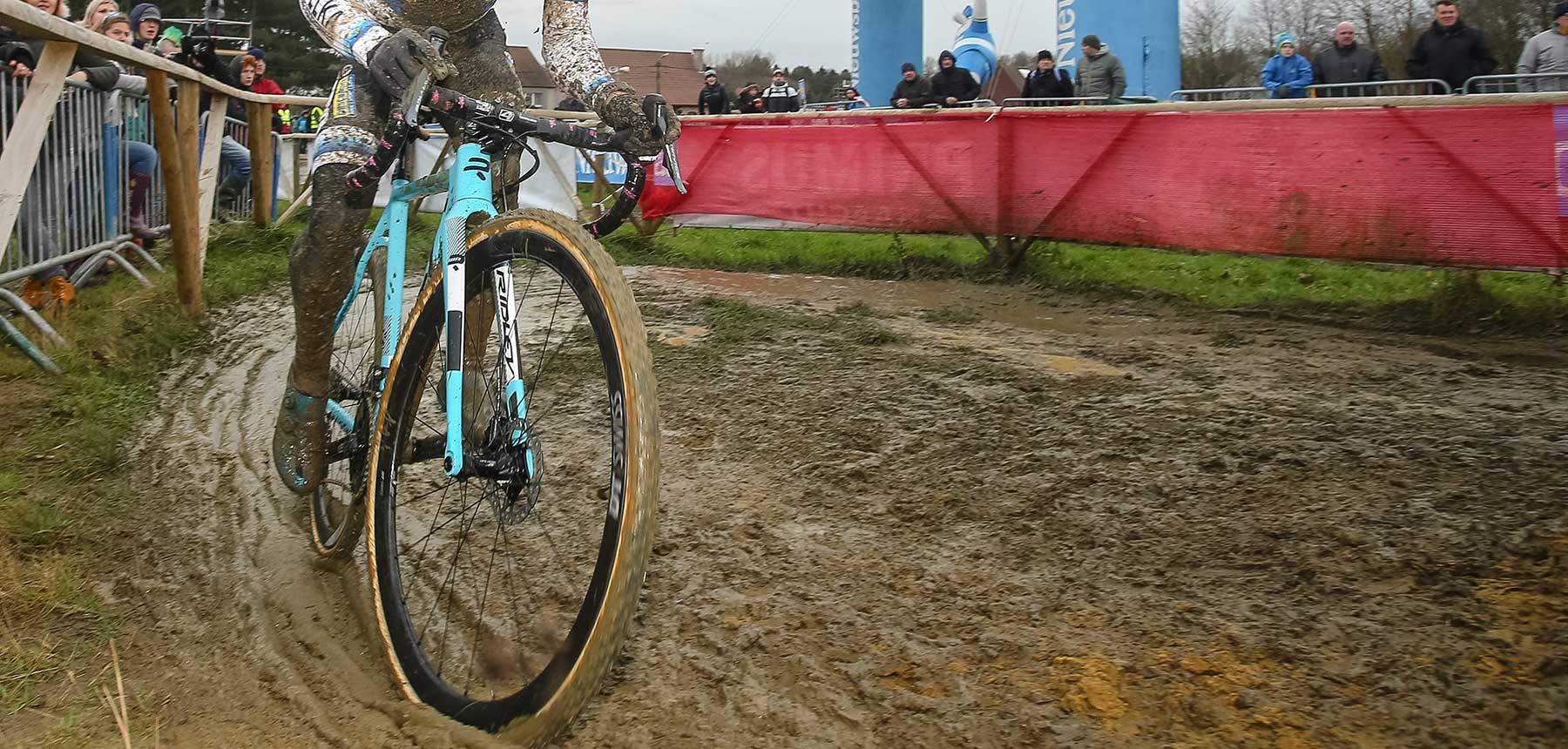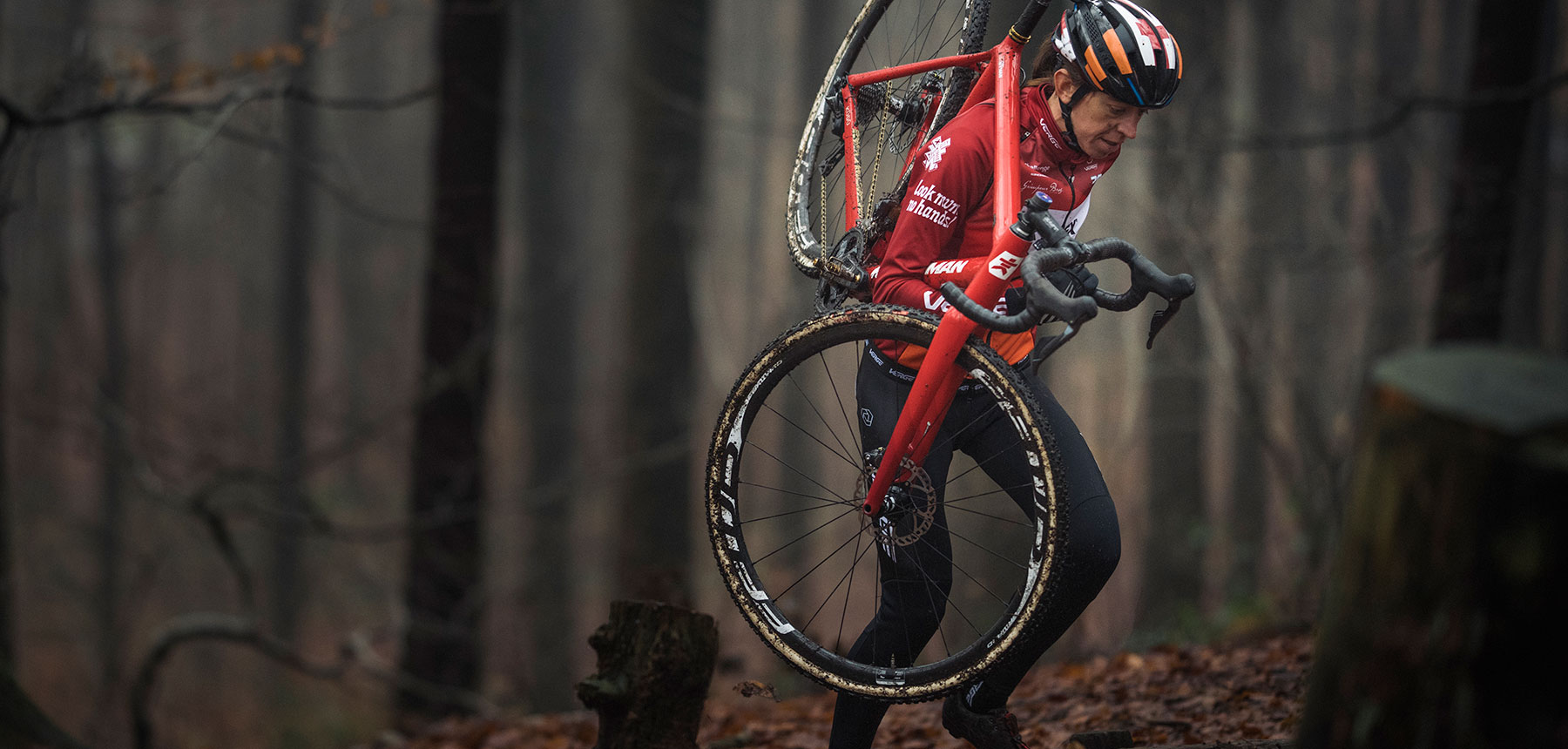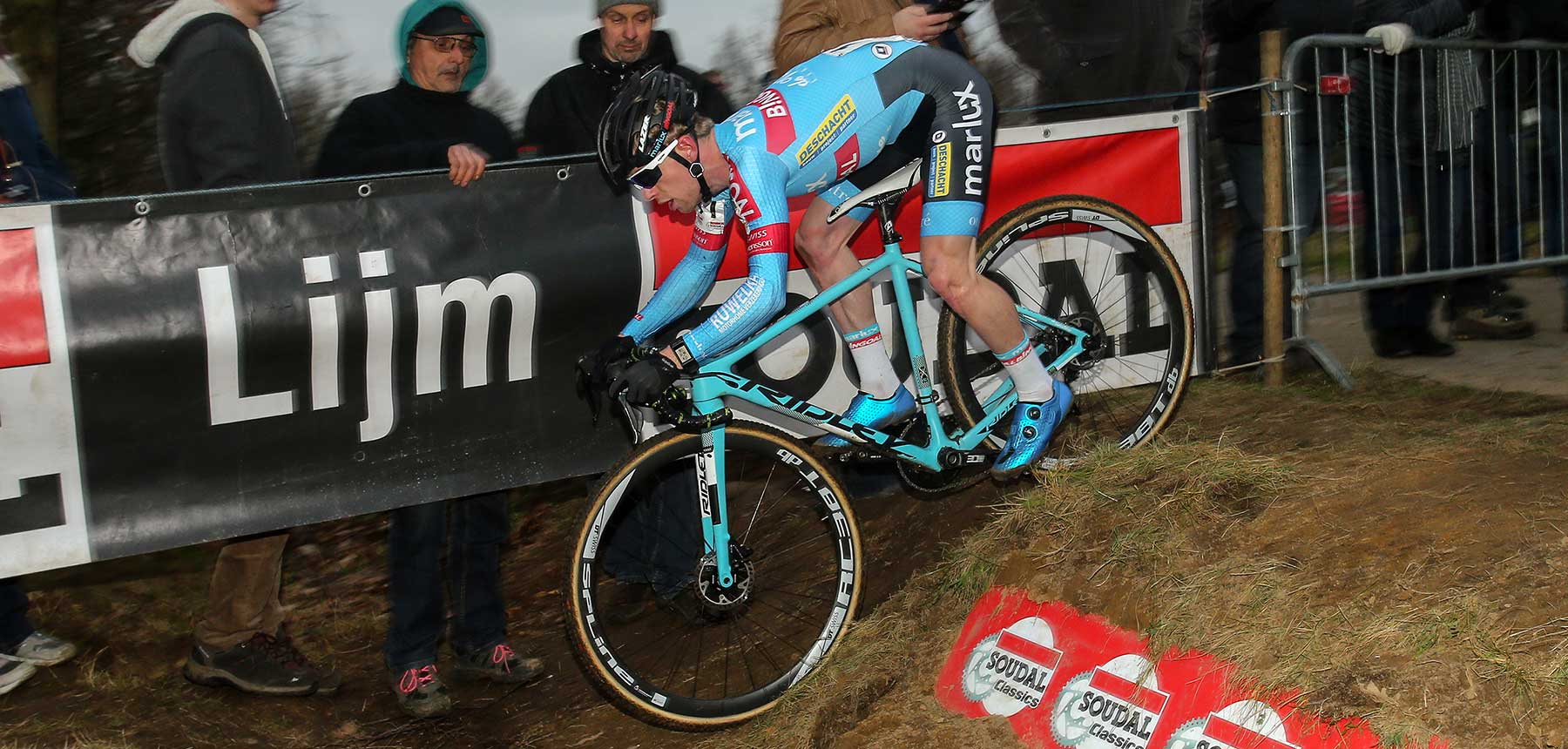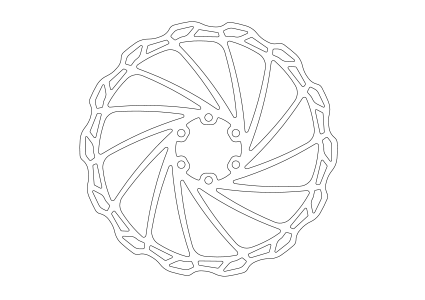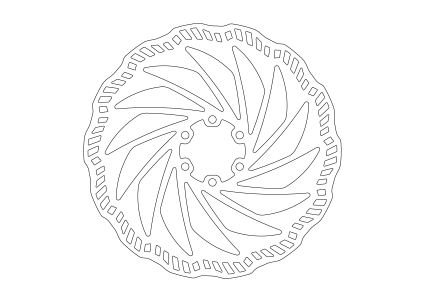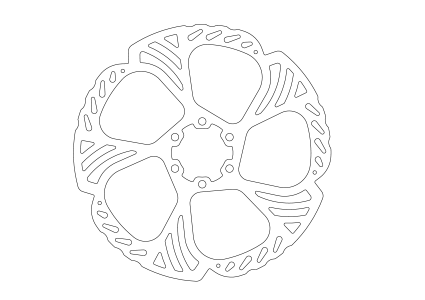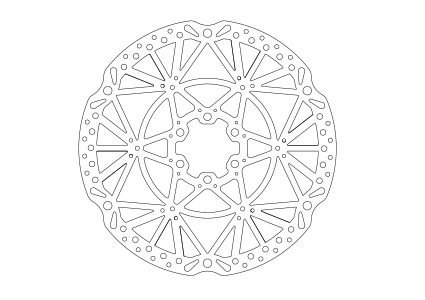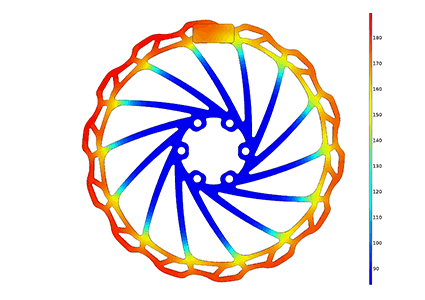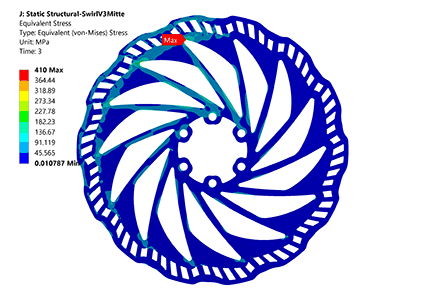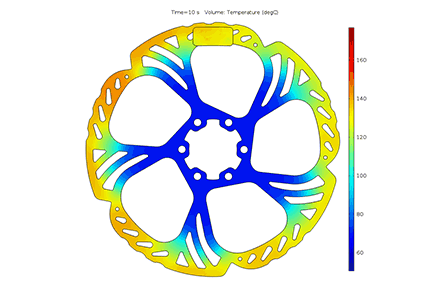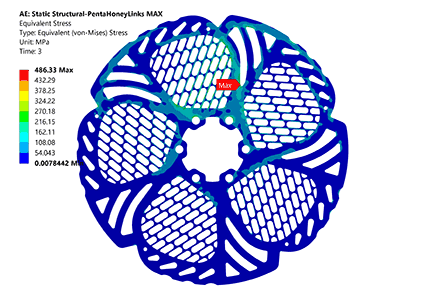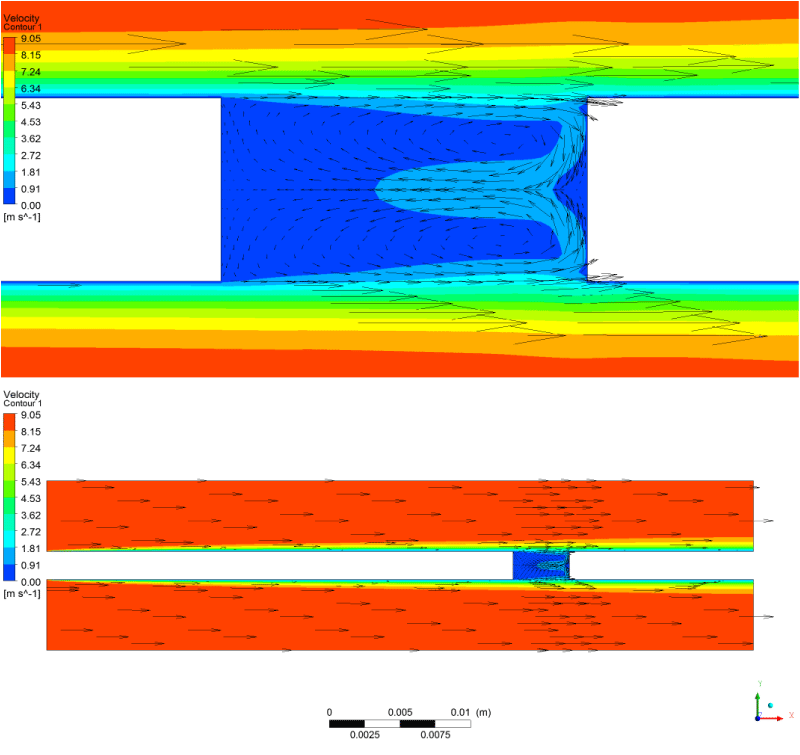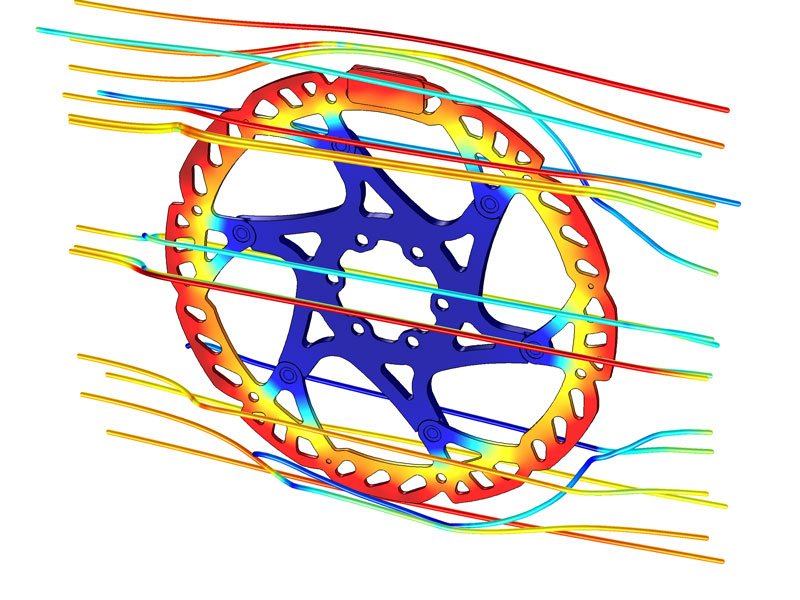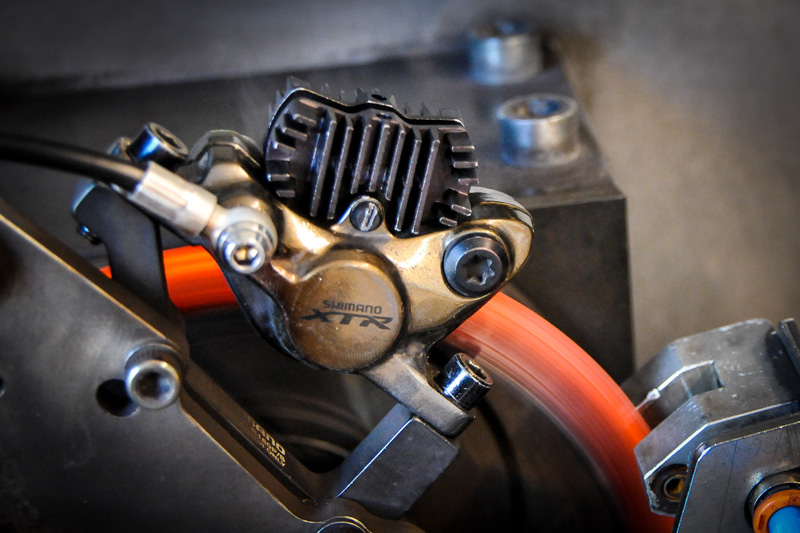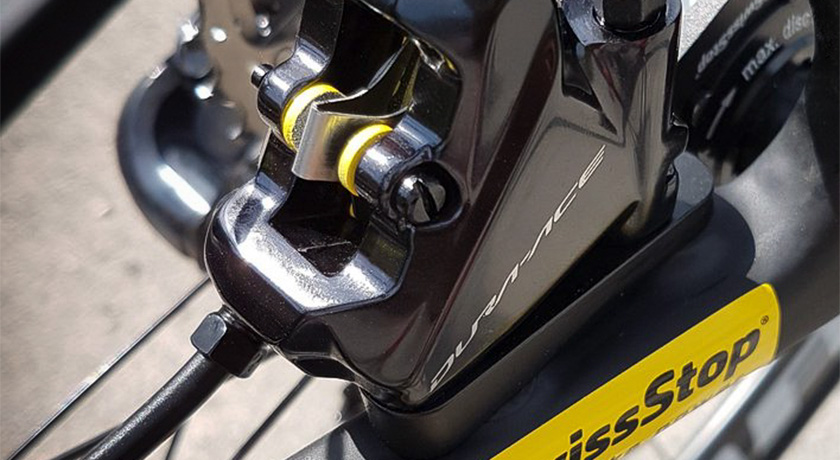

ENGINEERED TO SET A NEW STANDARD
- OPTIMUM HEAT DISSIPATION
- RELIABLE PERFORMANCE FROM CYCLOCROSS TO DOWNHILL
- HIGH DURABILITY, EVEN IN THE TOUGHEST CONDITIONS
power and durability
powerful braking and high durability, available in four sizes for applications including road, cyclocross, cross country and downhill
accepted by the UCI for road competition
the perimeter edge of the Catalyst brake rotor does not contain any 90 degree edges
wear out indicators
small divots on the surface show when it is time to replace the rotor
1. DESIGN AND MODELLING
In early 2015, the SwissStop engineering team conducted a series of laboratory tests on bicycle brake disc rotors. Next, they created digital models of these rotors and simulated the same test environments using advanced software. A comparison of the data verified that the simulations were accurate and effective, giving the engineers confidence to proceed with creating an array of digital prototypes to thoroughly test and evaluate.
2. HEAT AND STRUCTURE SIMULATIONS
Heat transfer within the design concepts was studied extensively using engineering simulation software. The relationships between convection, radiation, surface area and weight were used to determine the optimal design to maximize heat dissipation and strength while minimizing weight. The structure of each design was evaluated under braking forces ranging from typical hand pressure up to theoretical maximums. Critical pressure points in the structure were identified in order to maximize the strength and stiffness of the rotor.
3. AIRFLOW ANALYSIS
Computational fluid dynamics (CFD) simulations were peformed to study airflow over the surface of the rotor and through the cut-outs. A variety of profiles were tested to determine the effects of asymetrical holes and optimize the cooling effect of airflow over the surfaces.
Thermodynamic simulations, structural analysis and fluid dynamic visualizations were conducted in collaboration with the Institute for Energy Technology at HSR University of Applied Science.
4. FINAL DESIGN
The final design was confirmed and visualized with further thermal and structural simulations.
A two piece design consisting of a 7075-T6 aluminum alloy spider and SUS410 stainless steel brake track was chosen to balance light weight with reliable thermal management and structural performance.
Vibrations are minimized by the geometry of the brake pad contact area.
5. LABORATORY TESTING
Laboratory testing of the Catalyst disc rotor confirmed the results of the engineering simulations.
The Catalyst excels in endurance testing - delivering consistent brake torque over time while standard brake systems gradually decline and eventually suffer structural failure.
Further tests demonstrated extremely efficient thermal management, notably shorter stopping distances, very low wear rates and structural integrity under hard braking exceeding the current industry leaders.
Practical testing of the prototypes allowed the development team to determine the optimum balance between two of the primary, yet competing, characteristics: brake performance and weight.
A carefully chosen few extra grams of material added to the outer ring translated directly into shorter stopping distances.
Engineers selectively added material to specific sizes to further improve performance and durability.
Compatible with all sintered and organic pad compounds. Optimized for SwissStop EXOTherm2.
| Model | Thickness | Weight |
|---|---|---|
| Ø 140mm | 1.85mm | 110 g |
| Ø 160mm | 1.80mm | 128 g |
| Ø 180mm | 1.80mm | 156 g |
| Ø 203mm | 1.85mm | 198 g |

